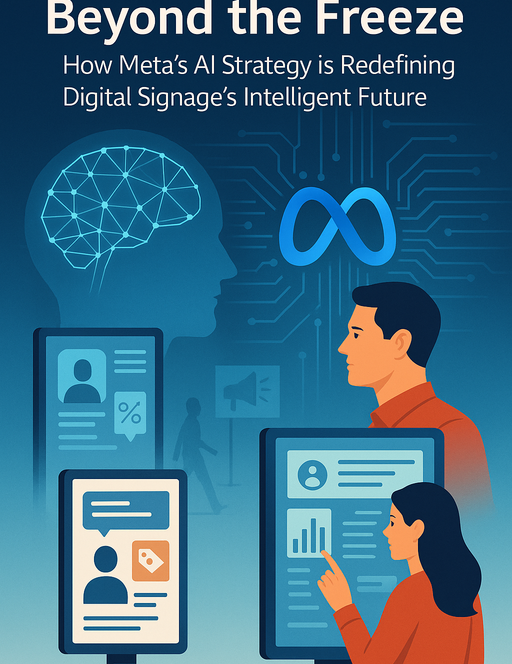In an era defined by rapid technological evolution, Artificial Intelligence stands at the forefront, reshaping industries and redefining capabilities at an unprecedented pace. From groundbreaking generative models to sophisticated analytical engines, AI’s pervasive influence is becoming increasingly evident across diverse sectors. As nations compete for global AI leadership, governments are rolling out comprehensive strategies to foster innovation, streamline development, and accelerate the integration of AI into the fabric of society. This strategic focus, exemplified by recent governmental action plans, creates a fertile ground for the maturation of applied AI technologies, paving the way for advancements in fields that might, at first glance, seem distantly related.
AI’s Policy Power-Up: A Catalyst for Innovation
President Trump’s recent “AI Action Plan” underscores a strong national commitment to solidify America’s position as a global leader in artificial intelligence. This comprehensive blueprint emphasizes key pillars such as reducing regulatory hurdles, facilitating the establishment of massive AI data centers, and promoting the export of American AI technologies. While these directives aim broadly at fostering economic growth and competitive edge, their ripple effects extend profoundly into niche yet rapidly expanding markets. For industries like digital signage, these policy shifts translate into tangible benefits: a more conducive environment for innovation, enhanced infrastructure to support data-intensive AI operations, and broader international market access for cutting-edge solutions. The national drive to accelerate AI development doesn’t just benefit tech giants; it creates an ecosystem where specialized applications, including intelligent visual communication systems, can thrive and scale.
Transforming Visual Communication: Use Cases & Trends
Digital signage, once a static medium for displaying information, is now undergoing a profound transformation, evolving into an intelligent, dynamic, and interactive communication platform, thanks to advancements in AI. No longer confined to pre-programmed loops, modern digital displays, powered by AI, can deliver highly personalized content tailored to specific audiences in real-time. Imagine retail screens that adapt promotions based on pedestrian demographics, or public transport displays providing dynamic information responsive to live travel conditions and passenger flow. AI algorithms enable sophisticated audience analytics, discreetly gathering anonymized data on viewer engagement, dwell times, and even emotional responses, allowing businesses to optimize their messaging with unprecedented precision. The policy emphasis on fostering robust and versatile AI, including addressing concerns about potential biases, can further ensure that these intelligent displays deliver equitable and relevant content to all viewers, enhancing the overall public experience and building trust in automated systems.
Beyond personalization, AI is driving significant industry trends in digital signage. Predictive analytics, for instance, can anticipate maintenance needs for display hardware, minimizing downtime and operational costs. Integrating AI with Internet of Things (IoT) sensors allows digital signs to become context-aware, adjusting content based on environmental factors like weather, time of day, or specific events happening nearby. Consider a smart billboard in a city center that changes its advertising content depending on real-time traffic density or local news headlines. Furthermore, the push to encourage the export of American AI technology means that these advanced digital signage solutions, developed with a focus on innovation and efficiency, can find markets globally, establishing new benchmarks for visual communication worldwide and contributing to the global adoption of smart infrastructure.
Real-World Impact and the Road Ahead
The real-world applications of AI-powered digital signage are vast and continuously expanding. In smart cities, these displays can provide real-time public safety alerts, navigate citizens to events, or optimize traffic flow through dynamic information dissemination. Corporate campuses are deploying AI-driven signage for personalized employee communications, interactive wayfinding, and efficient room booking. In the realm of smart retail, AI transforms storefronts into interactive experiences, leading to increased customer engagement and sales conversions. The immense computational requirements for processing vast amounts of data—from audience analytics to real-time content delivery—underscore the necessity for robust energy infrastructure and expansive data centers, areas specifically addressed by recent AI policy initiatives. By facilitating the construction and operation of these critical backbones, policy indirectly but powerfully enables the widespread deployment and sustained growth of advanced digital signage networks, promising a future where visual communication is not just seen, but intelligently felt and responded to.
As AI continues its relentless march of progress, propelled by both technological breakthroughs and strategic governmental policy, the landscape of digital signage will undoubtedly continue its profound evolution. We are moving beyond simple screens to a future of truly intelligent, adaptive, and seamlessly integrated visual communication systems. These systems will not only inform and entertain but will also learn, predict, and interact in ways that were once confined to science fiction. The convergence of AI innovation and supportive policy frameworks sets the stage for a new era where every display becomes a dynamic portal, offering personalized experiences and intelligent interactions, inviting us to reflect on the immense potential and transformative power of truly smart visual environments.
- DOJ to question Epstein associate Ghislaine Maxwell. And, Trump unveils new AI order
- Maxwell interview about Epstein ‘very productive’, lawyer says – BBC
- US Justice Department official to meet Epstein associate Maxwell …
- Top Takeaways: President Trump’s New AI Action Plan – WilmerHale
- What’s in Trump’s new AI policy and why it matters | PBS News
- Ghislaine Maxwell – Wikipedia



